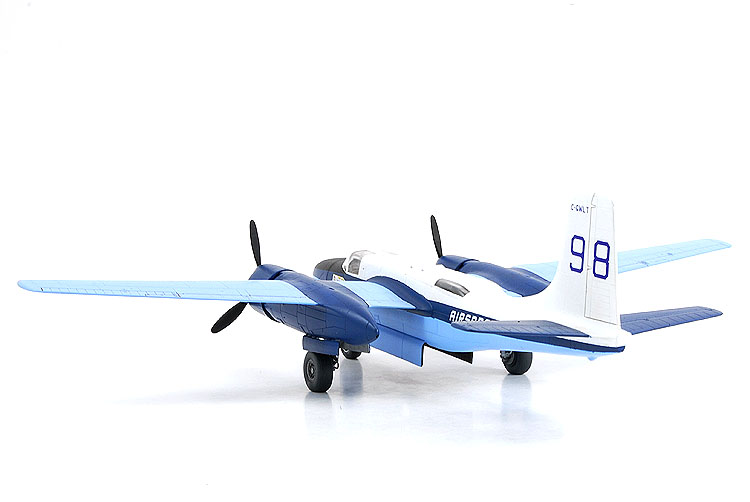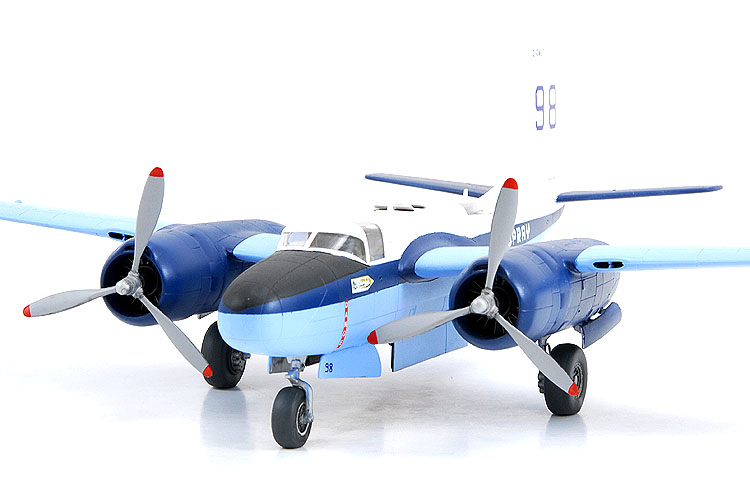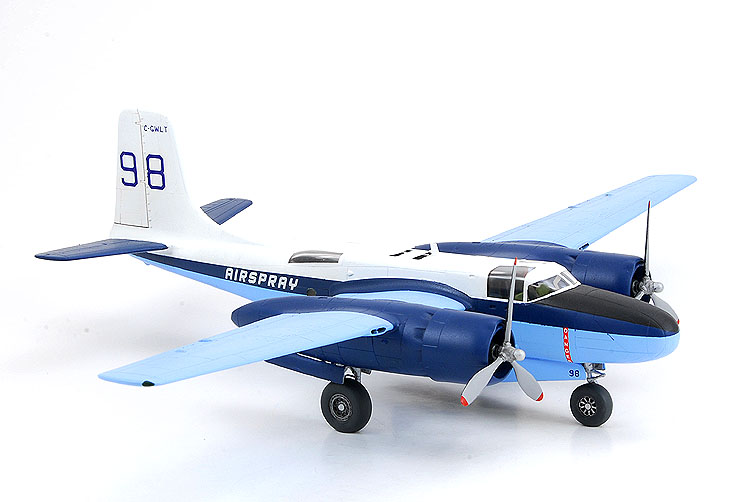
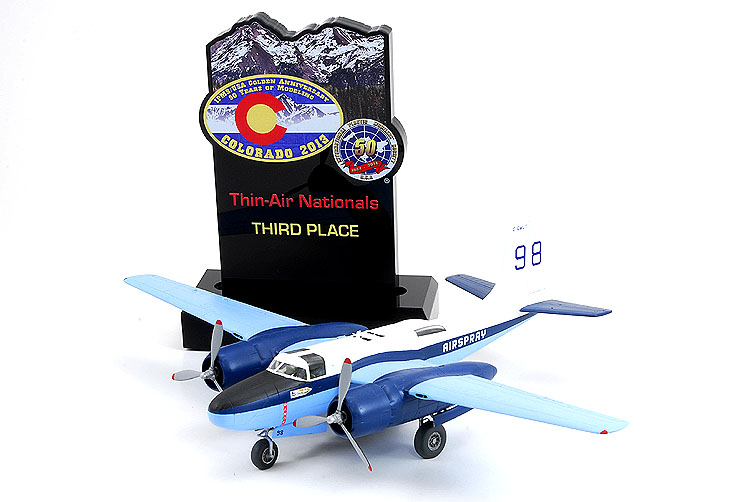
Normally I wouldn't go posting the awards my models have won, but I'm very proud of the fact I placed at the IPMS USA Nationals level.
Kit:
Aftermarket:
Date:
Revell AG (04310)
Leading Edge Models decals (26.1.72)
2011
A late-comer to the Second World War, what Douglas’s A-26 Invader lacked in WW2 service it more than made up for in longevity. From The Second World War, to Korea, Vietnam and a host
of Third World skirmishes, Invaders were also popular as high speed executive transports, air racers, flying laboratories, air tankers and drug runners.
One of my memories as a child, spending my weekends at the local airport, was watching the bright yellow and black Invaders roaring off each summer as they battled forest fires. The
sight and sound of those airplanes caused an interest in fire bombers that I still have today.
Years ago Leading Edge Models produced a sheet of decals for three Air Spray Ltd. Invaders. Knowing that sales were terribly slow and that a reissue was almost impossible, I held
tight to my sheet, hoping against hope that someone would offer a better kit than the ancient Airfix offering.
Thankfully that date came in 2006 with Italeri releasing four different versions of the A-26 in 1/72nd scale. In an unusual marketing arrangement, Italeri offers the A-26B with
six-gun nose and B-26K Counter Invader, while Revell offers the A-26B with eight-gun nose and clear-nosed A-26C. After learning “how” to build the kit with my B-26K, I broke out my
eight-gun A-26B kit and started working on the first of several fire bomber conversions.
I originally finished this model for my local model contest, where it took 3rd place. I then took it home and tweaked some of the items I’d left off before taking it to the IPMS USA
Nationals in 2013. No one was shocked more than I when I was awarded 3rd place in the Aircraft Conversion category – especially considering the amazing work the other modellers had
entered.
Unlike Italeri, who used light grey styrene, Revell opted for harder to glue silver plastic. Other than that, the kits are identical to each other, with recessed panel lines,
acceptable details and a need for small touches of putty throughout construction. Detail in the main wheel wells and bomb bay are almost non-existent but suitable if you’re like me
and prefer to leave your models sitting on the table.
For the most part, this model was built out of the box. I did use some filler to blank off the gun turret openings, and I plugged the eight machine gun ports in the nose. The biggest
change was to the bomb bay. Air Spray’s air tankers used a tank that was about 18 inches shorter than the wartime bomb bay. I simply
On top of the fuselage I carefully glued two pieces of sheet styrene as representatives of the four vents atop the retardant tank. I also added a couple aerial antennas, carefully
placed using the reference photos in the Leading Edge decal sheet. This was a nice touch that Leading Edge pioneered with their early decals, especially since there is no such thing
as two identical air tanker Invaders.
Don’t forget to also add the hose coupling beneath the gunner’s rear compartment or else your mini-air tanker won’t be able to fill up with retardant. I used a short length of rod
Plastistrut I found in my box of plastic stock.
Although Air Spray was primarily known for its bright yellow Invaders, for a period, they did have two A-26s flying in a two-tone blue and white scheme (Tankers 10 and 98). Since I
my local contest was quickly approaching, and I still hadn’t mastered yellow paint, I defaulted to Tanker 98.
Testors’ Acryl provided the light blue in Sky Blue, while Polly Scale Israeli Camo Blue is a perfect match for the dark blue.
Although I could have gone crazy with all sorts of heavy weathering on the engine exhausts and retardant stains, air tankers are thoroughly washed every evening to prevent
corrosion so I opted for the more subdued appearance.
I'm quite happy with how this Invader turned out. I was extremely pleased when I saw that it took third place in its category at the 2013 IPMS USA Nationals.
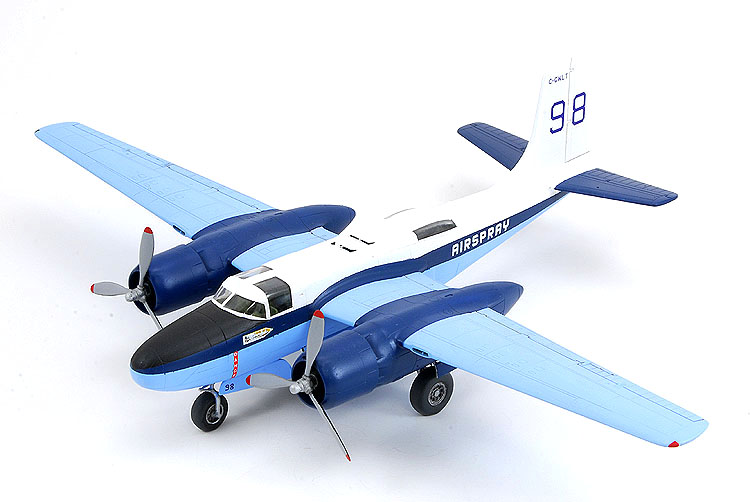
Not every conversion has to involve loads of aftermarket, or major surgery to the kit. With just a little sheet styrene and some filler, I de-militarized my A-26 and turned it into an air tanker.
